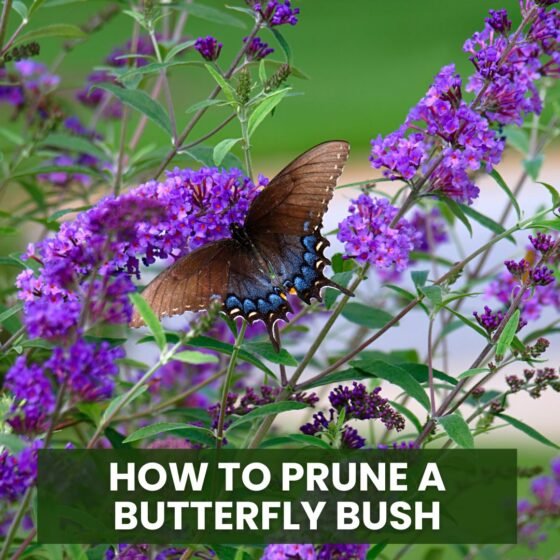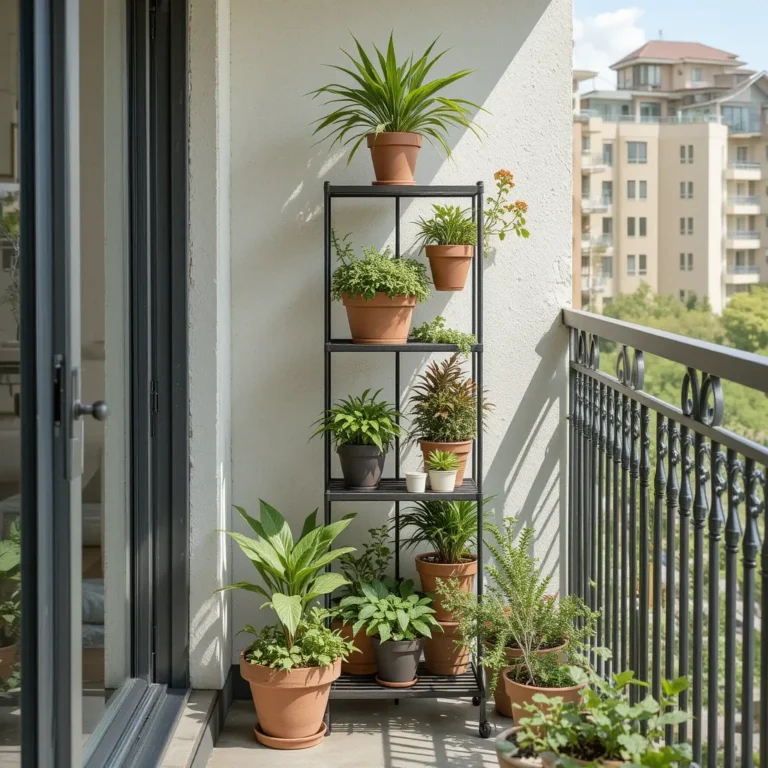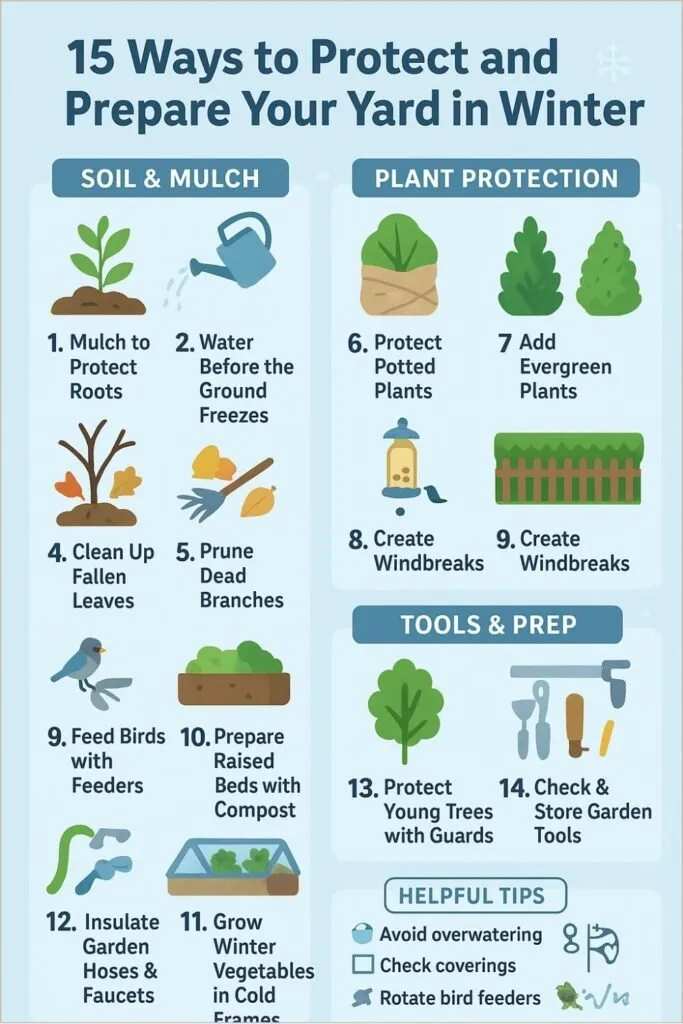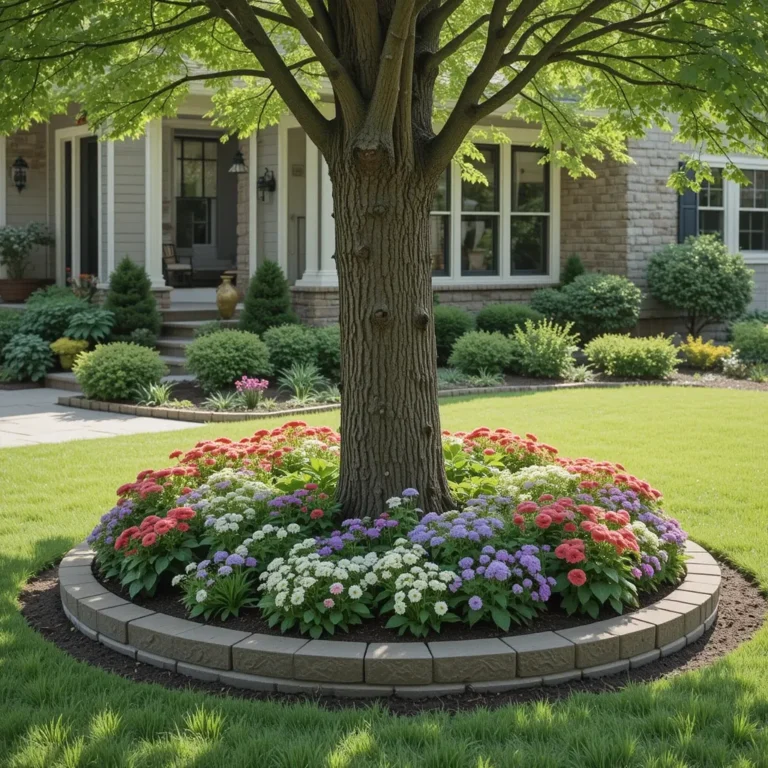The Complete Guide on How to Prune a Butterfly Bush for More Blooms and Healthier Growth
If you love watching butterflies flutter around your garden, then you probably already have a butterfly bush (Buddleja) in your yard.
These colorful, fragrant plants attract pollinators and bloom beautifully all summer long. But to keep your butterfly bush full of life and color, regular pruning is key.
Pruning encourages new growth, controls its size, and helps it produce more flowers every season. In this detailed guide, you’ll learn how to prune a butterfly bush, the best time to do it, and expert tips to keep your plant thriving year after year.

1. Why Pruning a Butterfly Bush Is Important
Pruning is essential because it removes old wood, encourages new shoots, and enhances blooming. Without pruning, your butterfly bush can become woody and sparse, leading to fewer flowers. Regular trimming helps it maintain a neat shape and allows sunlight and air to reach all parts of the plant.
2. Know the Right Time to Prune
The best time to prune your butterfly bush depends on your climate. In most parts of the United States, pruning should be done in late winter or early spring, right before new growth begins. Avoid pruning in the fall, as this can expose the plant to cold damage during winter.
3. Gather the Right Tools
Before you start pruning, prepare your tools. You’ll need sharp pruning shears, loppers, and gloves. Clean your tools with rubbing alcohol to prevent spreading disease from one plant to another. Sharp, sanitized tools make clean cuts that heal quickly.
4. Identify Old and New Growth
Butterfly bushes bloom on new wood, meaning flowers grow from stems produced that same season. Look for older, woody stems that didn’t produce many flowers last year—these are the ones to cut back. Newer green stems should be kept to ensure fresh growth.
5. Cut Back to the Base
The best pruning method is to cut the butterfly bush down to about 12 inches from the ground. This encourages strong, healthy stems to grow in spring. Cutting it low prevents it from becoming too tall and top-heavy, especially after heavy blooms.
6. Remove Dead or Damaged Branches
Inspect your bush carefully and remove all dead, diseased, or damaged wood. This prevents rot, improves airflow, and helps the plant focus its energy on healthy growth. Make your cuts just above a leaf node to promote new shoots.
7. Shape the Plant for Balanced Growth
After removing old wood, shape the butterfly bush by trimming uneven or crossing branches. Aim for a rounded, open shape that allows light to penetrate the center. A well-shaped bush not only looks beautiful but also supports even flower growth.
8. Deadhead Spent Blooms Regularly
Throughout the growing season, remove faded flowers (deadheading) to encourage continuous blooming. Use sharp scissors to snip blooms just above a leaf node. This simple habit can extend your flowering period until early fall.
9. Light Pruning in Summer
If your butterfly bush grows too tall or wide during summer, perform light trimming to maintain its size and shape. Focus on cutting back overgrown branches without removing too much foliage. This keeps it looking tidy while allowing it to keep blooming.
10. Dispose of Clippings Properly
Always dispose of pruned branches and dead flowers in compost or garden waste bins. Avoid leaving them near the base of the plant, as decaying matter can attract pests and disease.
11. Feed After Pruning
After a good prune, give your butterfly bush a boost with a balanced, slow-release fertilizer. Water thoroughly to help nutrients absorb into the roots. Feeding supports strong regrowth and abundant blooms in the coming months.
12. Mulch to Protect and Nourish
Add a 2–3 inch layer of mulch around the base after pruning. Mulch helps retain moisture, regulates soil temperature, and suppresses weeds. Keep it slightly away from the main stems to prevent rot.
13. Avoid Over-Pruning
While pruning is essential, cutting too much can stress the plant. Always leave a few strong stems so it can regrow easily. Over-pruning can delay blooms or weaken the plant temporarily.
14. Rejuvenate an Overgrown Butterfly Bush
If your butterfly bush has been neglected for a few years, rejuvenation pruning can help. Cut the entire plant back to about 6 inches from the ground in early spring. It might look drastic, but it encourages fresh, vigorous growth and better flowering next season.
15. Regional Pruning Tips
In colder states like Minnesota or Michigan, wait until after the last frost before pruning. In warmer areas like Texas or Florida, you can prune earlier in late winter. Always check your local climate patterns to avoid frost damage to tender new shoots.
16. How to Prune Dwarf Butterfly Bushes
Dwarf varieties, such as Buddleia Buzz or Pugster, require lighter pruning. Simply remove dead wood and shape the plant slightly each spring. Avoid cutting them too low, as they don’t grow as tall as traditional butterfly bushes.
17. The Best Way to Encourage More Blooms
The secret to continuous flowering is a mix of proper pruning, regular feeding, and consistent deadheading. Always remove faded blooms and water the plant deeply during dry spells. This encourages new shoots and longer bloom cycles.
18. Keep an Eye on Invasive Growth
In some US states, butterfly bushes can become invasive. Regular pruning and deadheading prevent the plant from self-seeding and spreading uncontrollably. You can also grow sterile varieties like Buddleia x weyeriana to avoid this issue.
Best Way to Prune a Butterfly Bush
The best way to prune your butterfly bush is to cut it back hard in early spring, removing old wood while keeping the strongest stems. Always make clean cuts just above a leaf node. After pruning, fertilize and water thoroughly to encourage new, healthy growth. Pruning once a year is usually enough to maintain shape and maximize flower production.
How Often Should You Prune a Butterfly Bush?
For most gardeners, once a year in late winter or early spring is ideal. However, you can perform light trimming throughout summer if it starts to overgrow or loses shape. Regular deadheading during the blooming season also helps the plant stay vibrant and produce more flowers.
FAQs About Pruning Butterfly Bushes
1. Can I prune my butterfly bush in the fall?
It’s not recommended. Fall pruning can expose your bush to winter damage since new growth won’t have time to harden before the cold sets in. Stick to spring pruning for best results.
2. How far back should I cut my butterfly bush?
You can safely cut it back to 12 inches above the ground in spring. For older or neglected plants, you can go even lower for rejuvenation pruning.
3. Do butterfly bushes grow back after hard pruning?
Yes! Butterfly bushes are very resilient and bounce back quickly after hard pruning, producing lush new growth and plenty of blooms.
4. Should I deadhead my butterfly bush?
Absolutely. Regular deadheading prevents seed formation and encourages repeat blooming. It also keeps your plant neat and healthy.
5. What happens if I don’t prune my butterfly bush?
Without pruning, the plant becomes woody, leggy, and produces fewer flowers over time. It also grows unevenly and may struggle to maintain its shape.
Final Thoughts
Learning how to prune a butterfly bush properly is one of the best ways to keep your garden lively and full of color.
A few careful cuts each year make a huge difference in how your plant grows and blooms.
By pruning at the right time, removing dead wood, and encouraging new shoots, you’ll enjoy a healthier, fuller bush that attracts more butterflies every summer.
So grab your shears, step into the garden, and give your butterfly bush the care it deserves—it’ll reward you with endless blooms and vibrant beauty all season long.






